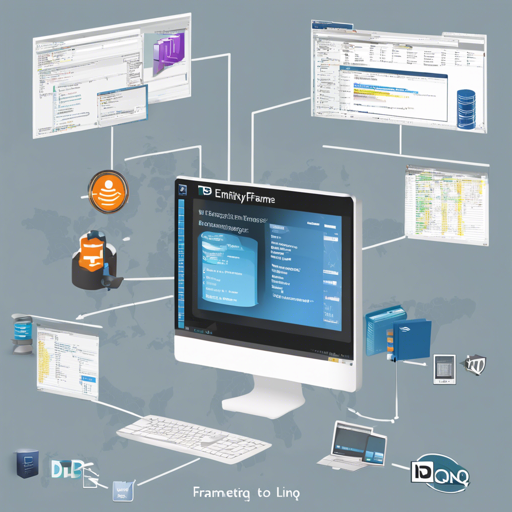Are you looking to enhance your existing EntityFrameworkCore projects with the robust functionalities of LINQ To DB? If so, you’ve come to the right place! This user-friendly guide will walk you through the integration process, along with some tips and troubleshooting solutions to ensure everything runs smoothly.
Understanding LINQ To DB and EntityFrameworkCore
LINQ To DB is a lightweight ORM that allows developers to work with databases in a more efficient manner. By integrating it with EntityFrameworkCore, you’re able to leverage the unique features of both libraries. Think of it like adding a turbocharger to your car: it enhances the performance without replacing your existing engine.
Getting Started
The integration process is straightforward. Here’s how you can utilize LINQ To DB in your EntityFrameworkCore project:
Step 1: Initialization
Before any queries can be made, you need to initialize LINQ To DB within your codebase. You can do this using the following command:
LinqToDBForEFTools.Initialize();Step 2: DbContext Setup
Next, configure your DbContext with additional options. Here’s an example:
var optionsBuilder = new DbContextOptionsBuilder();
optionsBuilder.UseSqlite();
optionsBuilder.UseLinqToDB(builder =>
{
builder.AddInterceptor(new MyCommandInterceptor());
builder.AddMappingSchema(myCustomMappings);
builder.AddCustomOptions(o => o.UseSqlServer(SqlServerVersion.v2022));
}); In this code, you begin by setting your database provider (Sqlite in this case) and then you can register custom interceptors or mappings to enhance functionality.
Step 3: Performing Operations
Once your context is configured, you can perform CRUD operations seamlessly. Here’s a quick overview:
- Fast Insert: Use the
BulkCopymethod to insert large datasets quickly. - Querying Unique Products: Retrieve products where duplicates by name do not exist.
- Update Records: Change the name of products based on previous values efficiently.
- Delete Records: Remove unwanted records through simple queries.
Remember, LINQ To DB provides additional functionalities such as the ability to use CTEs, SQL MERGE statements, and full-text search extensions which enrich your data manipulation experience.
Troubleshooting Common Issues
If you encounter any issues while using LINQ To DB with EntityFrameworkCore, here are some troubleshooting ideas:
- Check Existing Issues: First and foremost, always check the existing issues in the repository; your problem might have already been addressed.
- Debugging Queries: Utilize the
ToString()method to debug and view the generated SQL queries. This can help identify issues in your LINQ queries. - Integration Confirmation: Ensure that you’ve initialized the integration correctly and that all required packages are installed.
For more insights, updates, or to collaborate on AI development projects, stay connected with fxis.ai.
Why Use LINQ To DB with EntityFrameworkCore?
There are numerous motivating factors for integrating these two powerful libraries, such as:
- Gaining access to advanced SQL functionalities that aren’t available in EntityFrameworkCore.
- Facilitating a step-by-step migration to LINQ To DB.
- Just for the thrill of working with such a cool technology!
With many available providers like SQL Server, MySQL, PostgreSQL, and more, you’re equipped to handle various database needs.
Conclusion
Integrating LINQ To DB with EntityFrameworkCore amplifies your development capabilities and allows you to harness the strengths of both technologies effectively. Feel free to dive into advanced features without losing any core functionality.
At fxis.ai, we believe that such advancements are crucial for the future of AI, as they enable more comprehensive and effective solutions. Our team is continually exploring new methodologies to push the envelope in artificial intelligence, ensuring that our clients benefit from the latest technological innovations.
Final Thoughts
With this guide, you’re well-prepared to leverage LINQ To DB in your EntityFrameworkCore projects. Happy coding!

